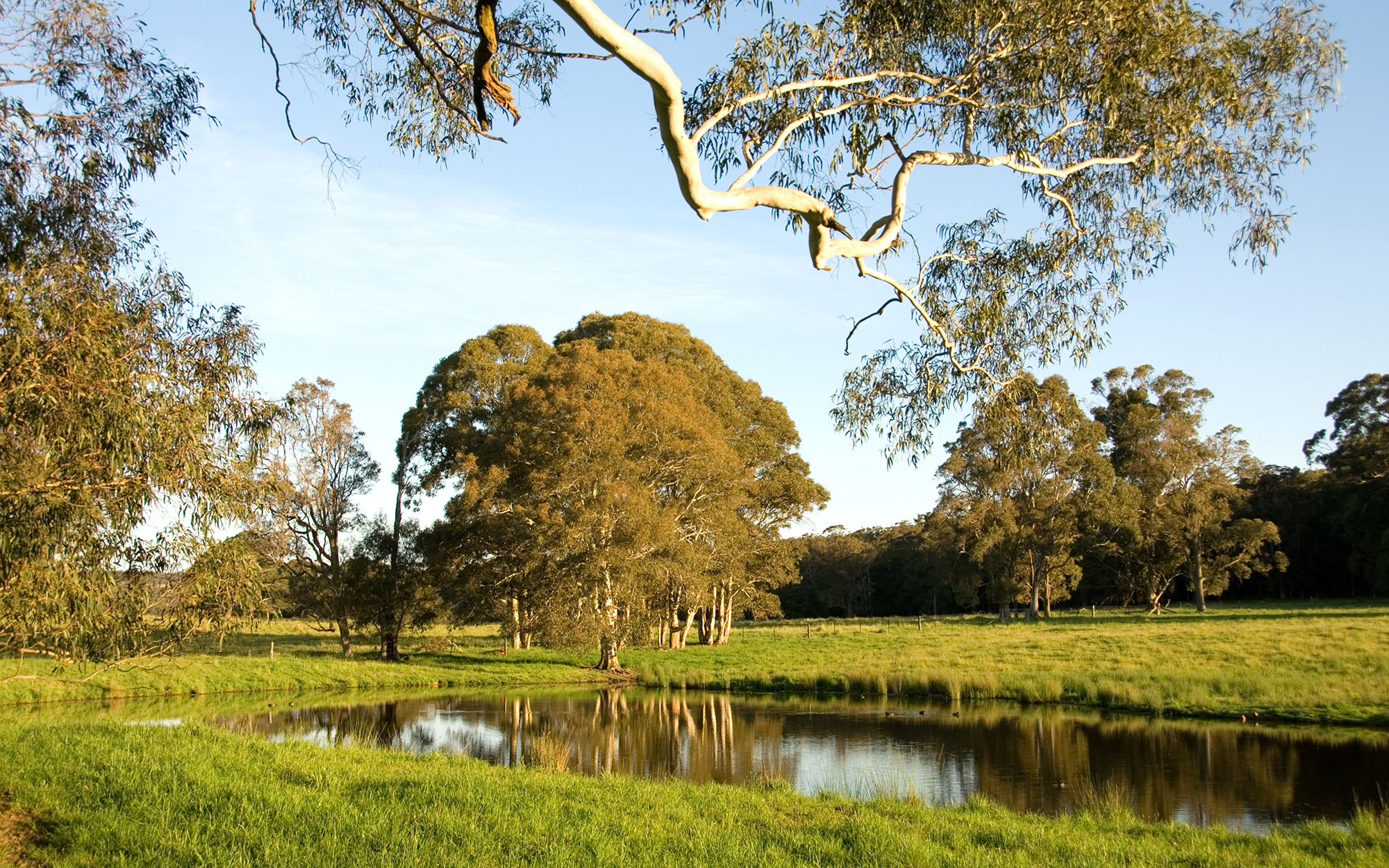Location of harvestable rights dams
Harvestable rights dams can be built on non-permanent minor streams (first and second order streams), hillsides and gullies. Streams are identified in the Water Management (General) Regulation 2018 hydro line spatial data.
Dams cannot be constructed on third order (or above) streams or within 3 kilometres upstream of a Ramsar wetland.
See the frequently asked questions and fact sheets for information on determining stream order and where dams can be built.
The harvestable rights limit for coastal-draining and central inland-draining catchments is 10%
Landholders in NSW’s coastal-draining and central inland-draining catchments can capture and store up to 10% of the average annual regional rainfall runoff from their landholding as harvestable rights water.
The harvestable rights limit for coastal-draining catchments was returned to 10% from 30% in September 2023 so work could progress on determining whether the current levels of water extraction in coastal catchments is sustainable in the long term. More information about this work can be found on the coastal sustainable extraction project page.
It is important this work on sustainable extraction progresses before any increase to harvestable rights is considered. If the coastal harvestable rights limit was left at 30%, there could be unquantified negative impacts on other water users and downstream environments.
The work that had already started on the coastal harvestable rights catchment-based assessments will now be used to inform the broader sustainable extraction work for coastal NSW.
Landholders should refer to our frequently asked questions to make sure they understand how the harvestable rights rules have changed and the reasons for the changes.
Updates to harvestable rights rules
When the harvestable rights limit was returned to 10% on the coast (on 27 September 2023) updates were made to the other harvestable rights rules for coastal-draining catchments and central-inland draining catchments.
They relate to:
- harvestable rights dams on floodplains
- the definition of a ‘landholding’
- preventing major streams from being misclassified as minor streams
- clarifying rules for mixed-rights dams
- preventing landowners and occupiers from both capturing (i.e. double counting) harvestable rights from one landholding.
The updates make the rules clearer and clarify what landholders can and cannot do to help them to better manage water on their landholdings.
The updates also allow the department and the Natural Resources Access Regulator (NRAR) to do their job more efficiently and effectively, so they can ensure landholders are following the rules and harvestable rights dams are not having unintended negative impacts on the environment and other water users.
For more information on the updates and what they mean for you, see our frequently asked questions.
Landholders who notified the department they would be capturing up to the previous 30% limit
When the harvestable rights limit changed to 10% in September 2023, only a handful of landholders had informed the department of their intent to build or use a larger harvestable rights dam up to the previous 30% harvestable rights limit. The department contacted these landholders to notify them of the change back to the 10% limit.
If you did not submit a notification form in accordance with the previous harvestable rights order (the Harvestable Rights (coastal-draining catchments) Order 2022), any dams constructed or converted will not be harvestable rights dams and regulatory action may be taken unless the appropriate approvals or exemptions are in place. A water supply work approval will be needed for the dam/s and water take will need to be licensed (unless an appropriate exemption applies).
Permitted water uses in coastal-draining catchments
Water that is captured and stored in a harvestable rights dam, up to the 10% dam capacity for a landholding, can be used for any purpose. This includes a single dam or multiple dams with a combined capacity up to the 10% limit.
Permitted use restrictions remain in place if, prior to 27 September 2023, you built or enlarged a harvestable rights dam or converted an existing dam into a harvestable rights dam to capture and store water up to the previous 30% limit. The water captured and stored in those dams cannot be transferred to any other type of dam and can only be used for:
- domestic consumption
- stock watering
- extensive agriculture purposes.
Landholders can move water between harvestable rights dams only if those dams have the same permitted uses rules applied to them (i.e. you cannot transfer water from a harvestable rights dam that can be used for any purpose to one that can only be used for stock consumption, stock watering and extensive agriculture – and vice versa).
Landholders must not move water from a harvestable rights dam to any other type of dam on the landholding, including an ‘excluded works (PDF, 185.05 KB)’ dam or a turkeys nest dam.
Further information
For further information about harvestable rights in coastal-draining and central inland-draining catchments, see the frequently asked questions, fact sheets or contact Water Enquiries on 1300 081 047 or water.enquiries@dpie.nsw.gov.au.
